
Estimated reading time: 8 minutes
The SPR Concept
Vortex releases a new lightweight 2-10x as mid-power scopes continue to grow in popularity.
Table of contents
I have been dabbling with the Special Purpose Rifle (SPR) concept for the last year or so and I have found a real appreciation for the practicality of a good SPR setup. This is the second scope I’ve used that fits the category with the first being Primary Arms GLX 2.5-10.
In broad terms, an SPR is just an AR built with mid to long-range use in mind. Contrast this with a Short Barreled Rifle (SBR) which is meant for short range and a General Purpose Rifle (GPR) that tries to do a little of everything. Below you will see a graphic depicting the relationship I see between these three rifle types.

While I do have a dedicated SPR build, I decided to swap the 1-8x LPVO on my 14.5” GPR for the Vortex Viper HD 2-10. I wanted to see how the 14.5” would benefit from a bit more magnification. While 14.5” is a bit shorter than the typical SPR, I think it fits the role well enough since my goal is increased precision within five hundred yards.
Available on GunsAmerica Now
Viper HD 2-10 Specs
To start, here are the general specs.
- 42mm objective lens
- Second focal plane
- Capped turrets
- Fixed 100yd parallax
- Field of view is 61.6ft-11.9ft at 100yds
- 3.4in eye relief
- 12.1in long
- 19.9oz in weight
- 30mm main body
A 12.1” length is pretty standard for a scope with this magnification range but the 30mm tube, not so much. The larger tube is a nice feature since it aids light transmission and allows for more elevation adjustment than a 1” tube but it adds a bit of weight. Not too much in this case though because an overall weight of 19.9oz is on the lighter end of its class.
Viper HD Parallax
Another interesting design choice is to have a fixed 100-yard parallax. Parallax is the difference in the apparent position of an object when viewed from two positions. A simple demonstration of this is to close one eye and place your thumb over a target a few yards away. Then, keeping the thumb still, move your head from side to side and observe how the thumb appears to move relative to the target. Next, physically place your thumb on the target and move your head again. The thumb doesn’t move because the distance between the target and the thumb is zero.
In this exercise, your thumb represents the reticle, and the distance between the thumb and the target is the difference between your parallax setting and the actual distance. A correctly adjusted parallax optically corrects for the distance between the reticle and the target making it behave as if the reticle is right on top of the target. This minimizes the effects of imperfect head placement and increases reticle clarity.
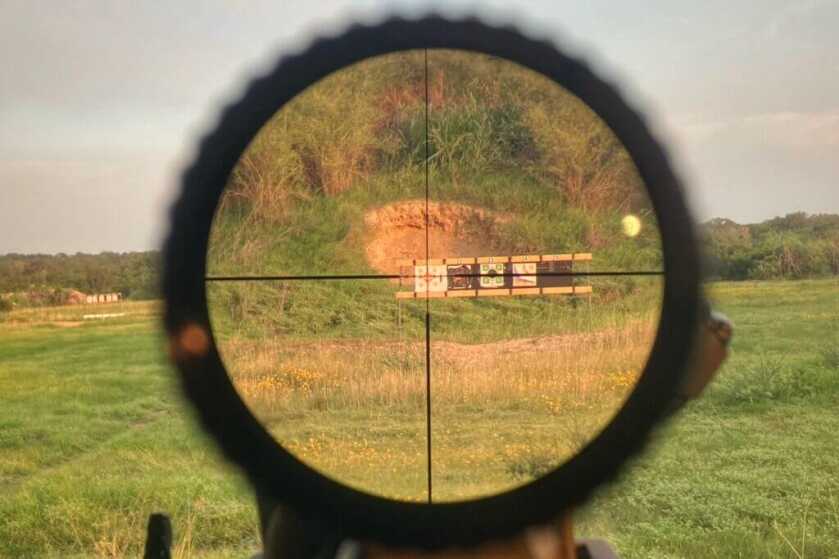
Excluding the ability to adjust parallax simplifies the optic since it deletes an adjustment but it requires the shooter to practice consistent head placement or else pay the price with possible inches of parallax error at long range. For this reason, I prefer adjustable parallax vs fixed.
Dead-Hold BDC Reticle
The Viper HD features a simple and clean reticle. See the MOA spacing of the Dead-Hold BDC reticle in the graphic below.

One factor that should not be overlooked is that this is a second focal plane scope. That means that the reticle stays the same size on all the magnification settings. If you plan to use the hash marks in the reticle for holdovers you need to be aware of what magnification you are on. As a general rule, most people only use reticle BDC on max power with a first focal plane scope since the angular deviation between the markings will be different for every magnification.
Reticle Illumination
This reticle features an illuminated dot at the center of the crosshairs. You turn it on by pressing the button opposite the windage turret. There are nine brightness settings on the Viper HD that you scroll through by tapping the same button. When you reach the highest or lowest brightness level the dot will flash letting you know you have maxed out in that direction. Simply hold the button down to shut off the illumination.

Additionally, there is an auto-off feature on the illumination. Unlike a red dot with a battery that can last for years, illuminated scope batteries generally drain within a couple of days if left on. As my dwindling battery supply can attest, I forget to turn them off far too frequently. In the case of this scope, I have left it on multiple times and come back days later to find it has shut itself off saving me a battery replacement.

This reticle illumination is one of my favorite parts of the scope. The activation button is so much slimmer than the rotating turret most scopes use. The illumination point in the center is bright enough to be used like a red dot when the scope is on low magnification and it does a good job of driving your focus to the center of the reticle.
Windage and Elevation On the Viper HD
Knurled aluminum caps cover both the windage and elevation turrets. You will find that the laser-engraved turrets are sturdy and easily adjustable by hand. Adjustments are smooth but tactile and each quarter-inch adjustment is indicated. To set zero position simply pull the turret out, move it to zero, and let it lock back into place. With the zero position set, you can confidently dial windage and elevation adjustments without losing your zero.

Clarity and Field of View
This scope offers good clarity and produces a bright image even in the early morning or late evening. This is particularly nice when trying to make use of those last few minutes after sunset and in overcast conditions.
The field of view is nice and wide. I have a good broad view of my target’s surroundings when using this scope as opposed to many others where it feels like I’m looking through a paper towel roll.

There is a bit of image distortion near the edge but I would rather have a bit of distortion around the perimeter than a narrower image with edge-to-edge sharpness.
Final Thoughts On the Viper HD
Overall I think this is a good scope and I have found that the more I use it the more I like it. I was right to think it would make a good SPR scope and recently I have started to see its value as a hunting optic as well.
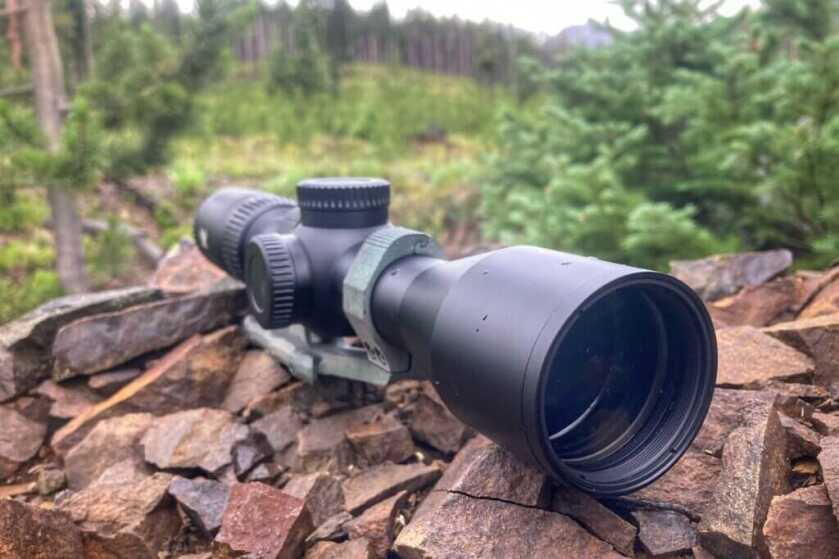
The capped turrets, lightweight design, and good light transmission are all excellent features for a hunting scope. Even the lack of parallax adjustment becomes a nonissue when hunting medium to large game within five hundred yards.
READ MORE: Primary Arms GLX 2.5-10 – Optimal SPR Optic?
The MSRP for the Viper HD 2-10×42 is set at $900 but the street price is much more reasonable at around $600, for this scope that seems to be a fair price to me.
Be sure to check out Vortex’s website for more information on this scope or to find a dealer near you so you.
*** Buy and Sell on GunsAmerica! ***





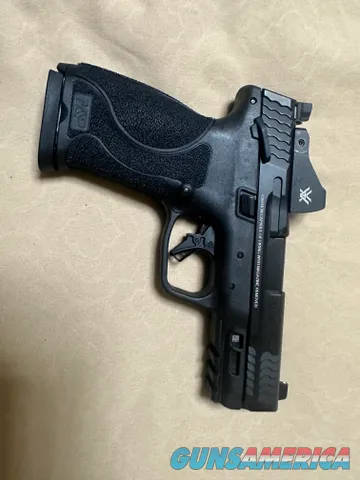

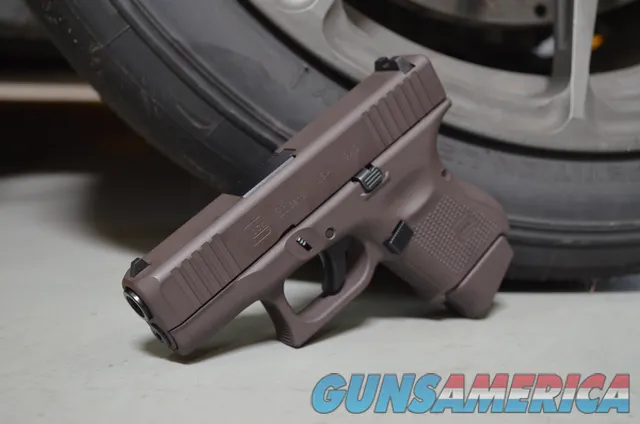
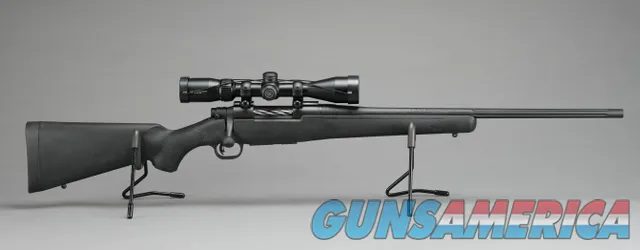



The Vortex Viper HD 2-10×42 is a versatile and lightweight scope that fits well into the Special Purpose Rifle (SPR) category, offering a solid balance of clarity, durability, and precision. With features like a simple Dead-Hold BDC reticle, fixed parallax, and effective illumination, it’s an excellent choice for mid-to-long-range shooting, whether for SPR builds or hunting. The scope’s easy-to-use adjustments, good light transmission, and reasonable price make it a great value for those seeking a high-performance optic without breaking the bank.
goof
I’m particularly interested in how you compared the Primary Arms GLX 2.5-10 with your current scope.
You state: “As a general rule, most people only use reticle BDC on max power with a first focal plane scope since the angular deviation between the markings will be different for every magnification.” However, this should say ‘second focal plane scope’ in order to be accurate.
I saw that as well, hopefully the writer will fix it at some point.